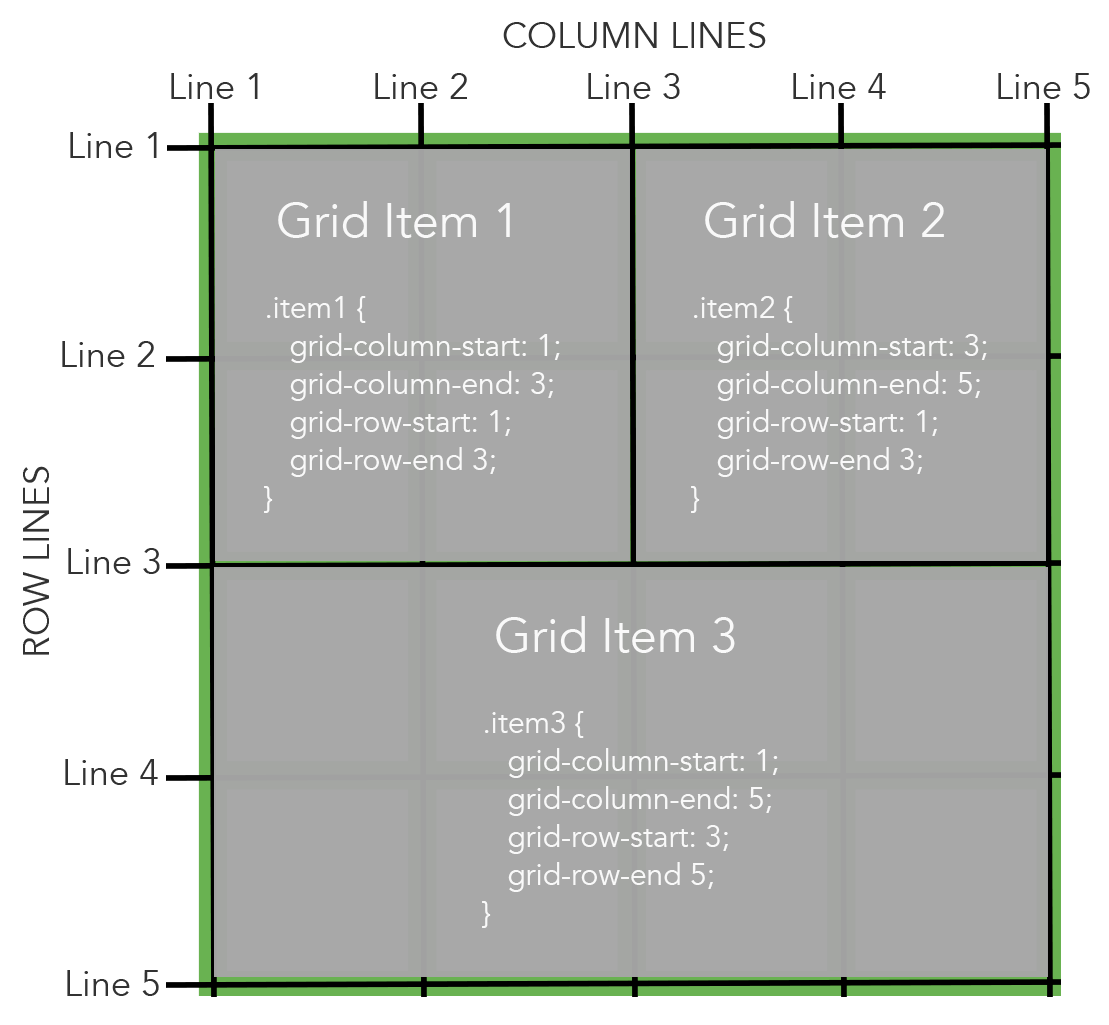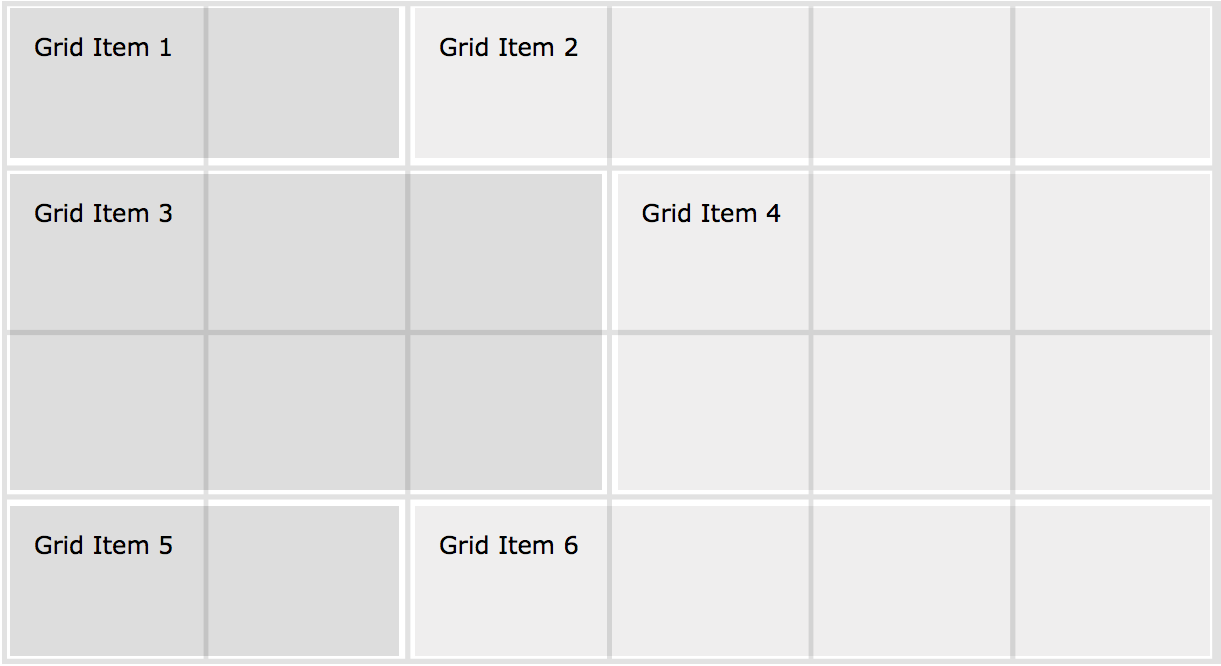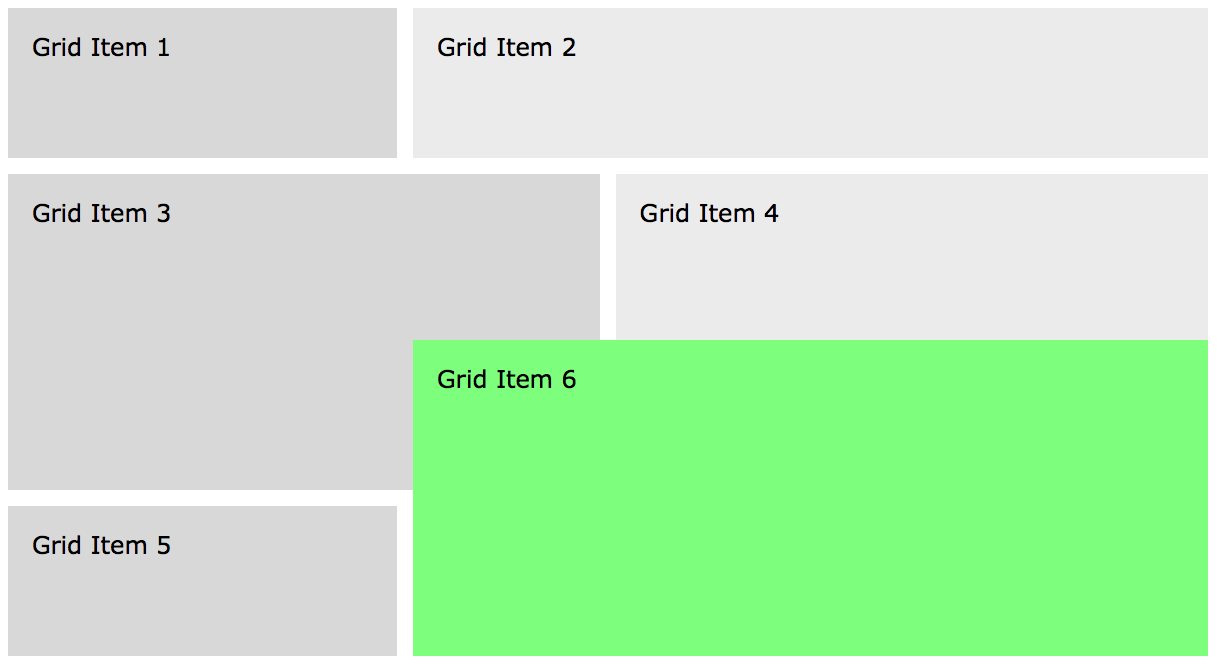Layout with Grid Lines
CSS Grid has powerful new layout tools to create precise two-dimensional (both columns and rows) layouts. Once a grid container has been defined, grid items can be placed onto the grid using either grid lines or grid areas. We'll look at grid areas in our next lesson. Here, we will focus on using grid line designations to sort of "hang" grid items onto a grid.
Column Lines & Row Lines
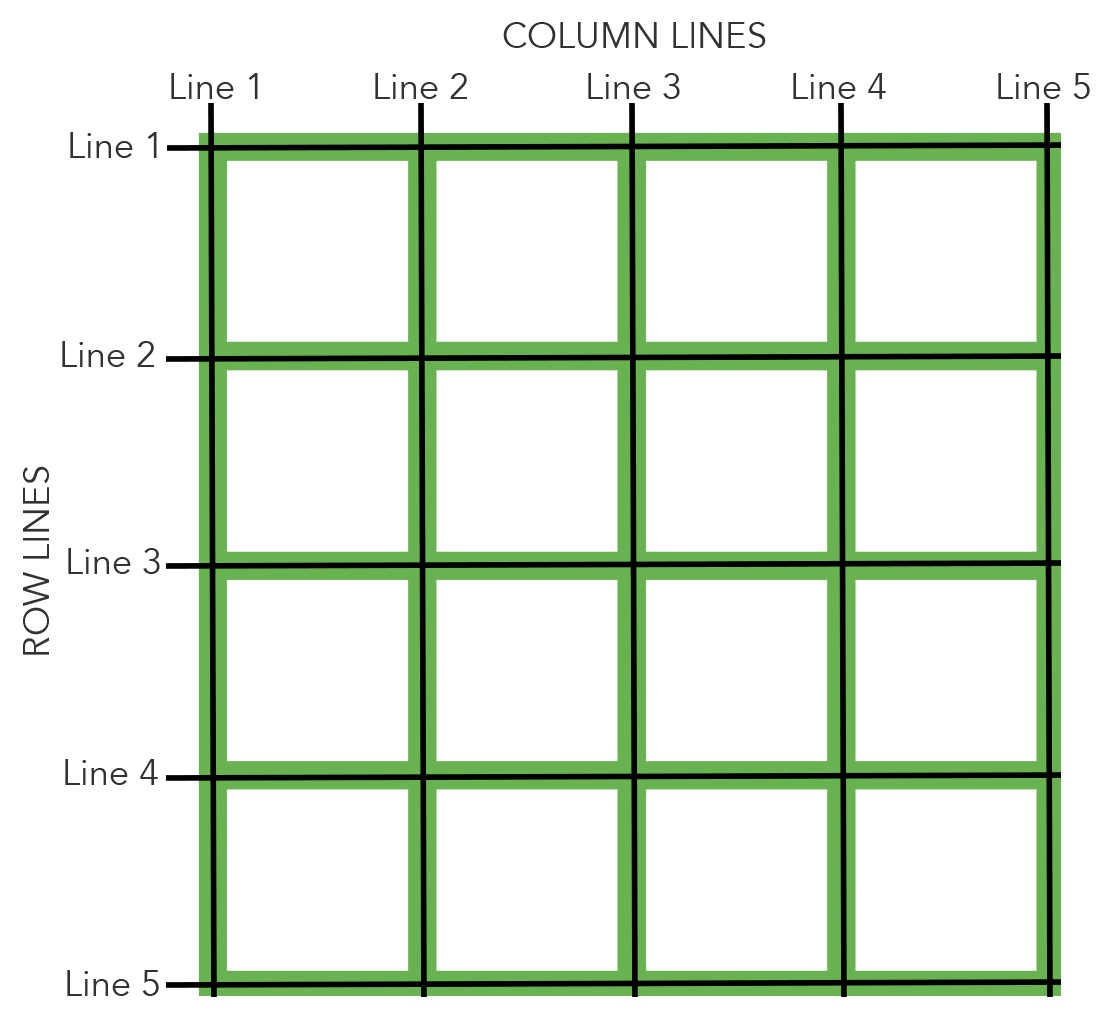
This grid container contains four columns and four rows. Column lines and row lines are numbered.
There is always one more column line than columns and there is always one more row line than rows. We use these lines to determine where to place grid items onto the grid.
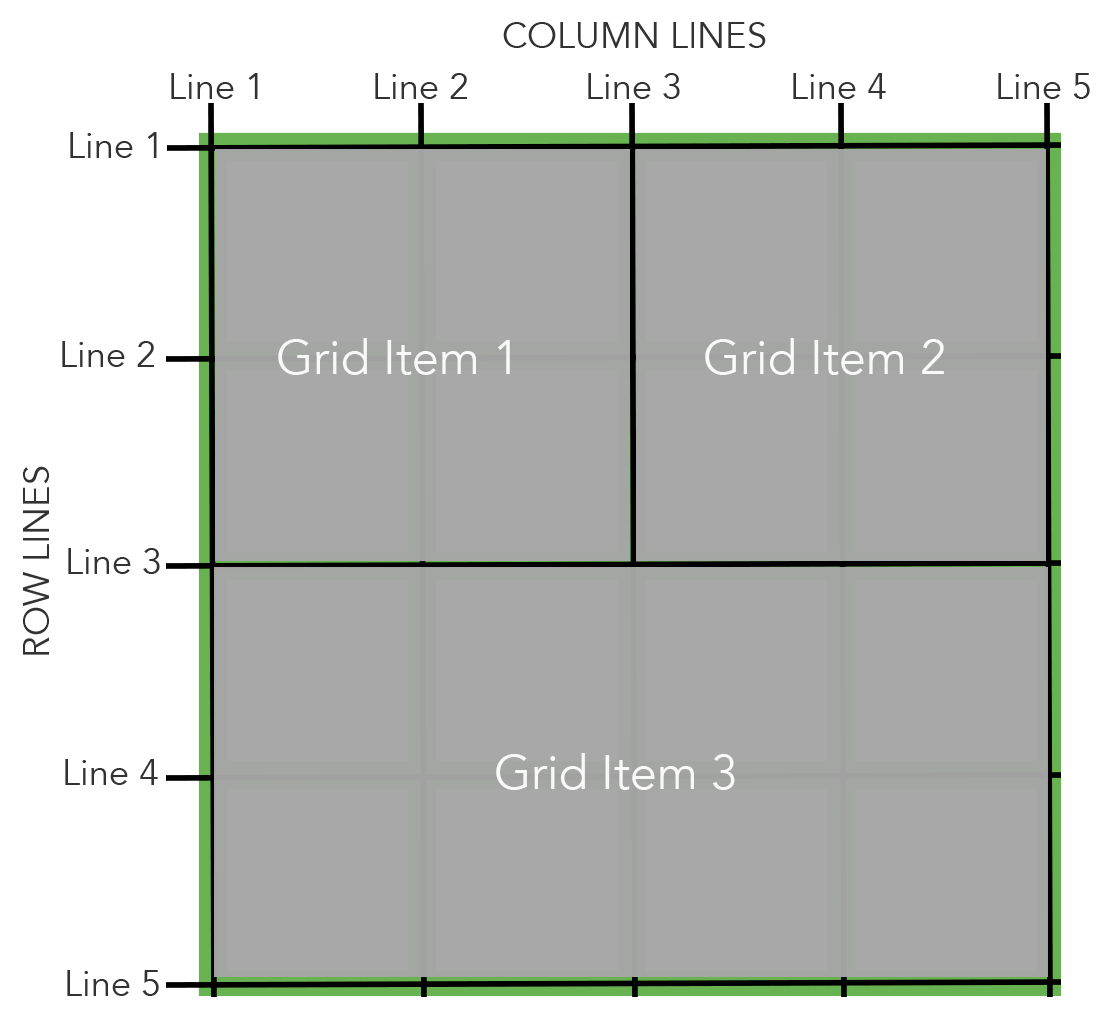
Grid item one starts on column line 1 and ends on column line 3. It starts on row line 1 and ends on row line 3.
Grid item two starts on column line 3 and ends on column line 5. It also starts on row line 1 and ends on row line 3.
Grid item three starts on column line 1 and ends on column line 5. It starts on row line 3 and ends on row line 5.
